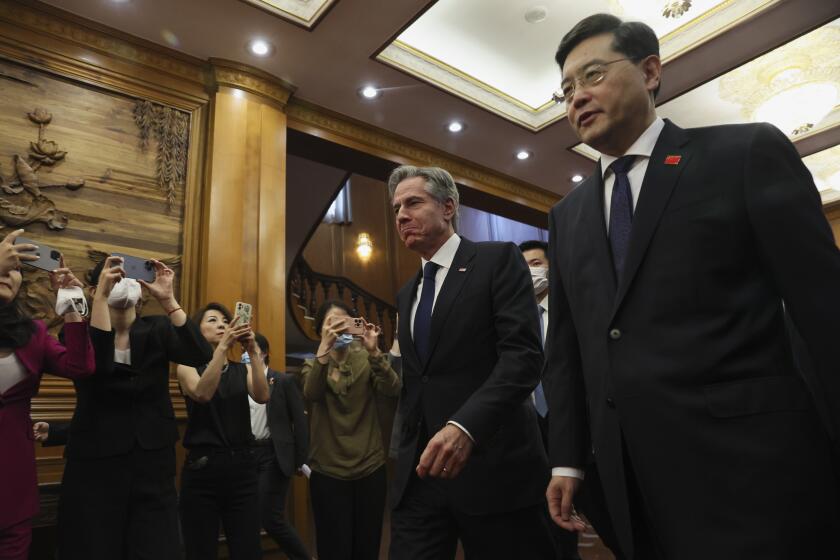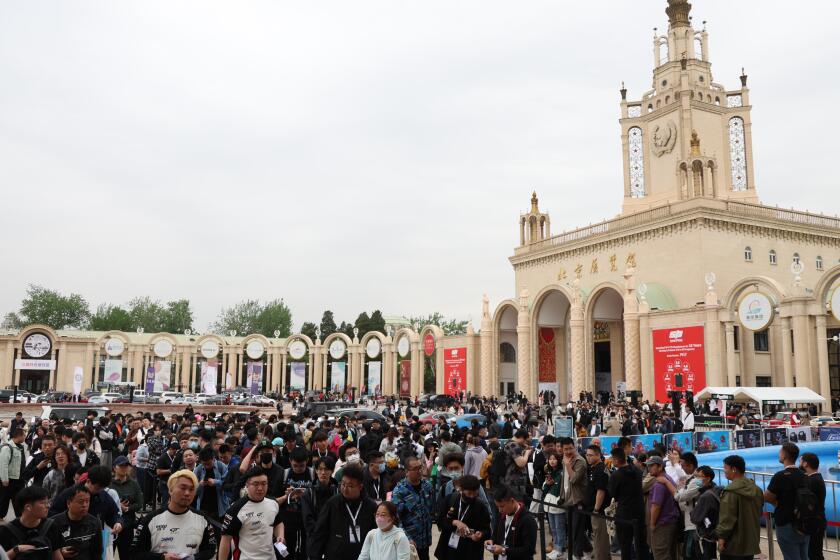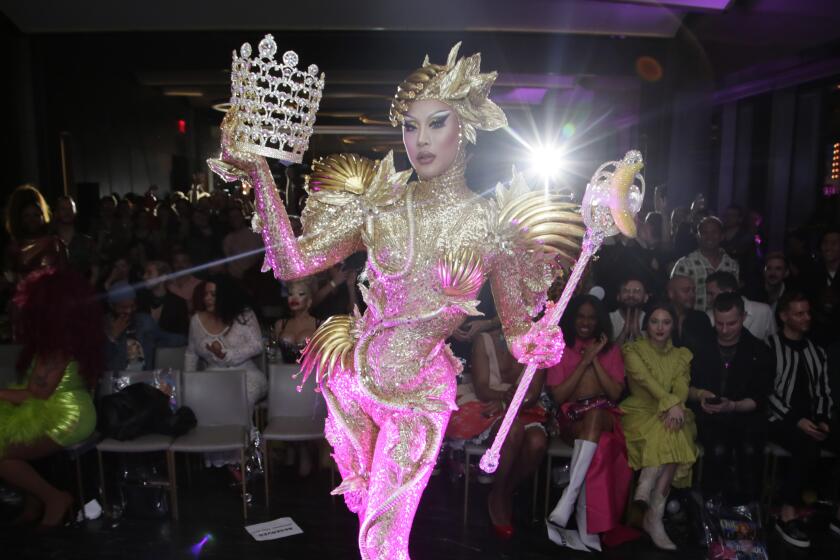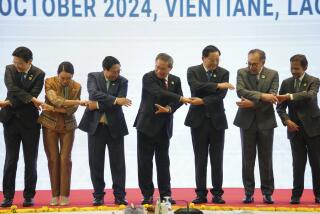Defense chiefs from U.S., Australia, Japan and Philippines vow to deepen cooperation
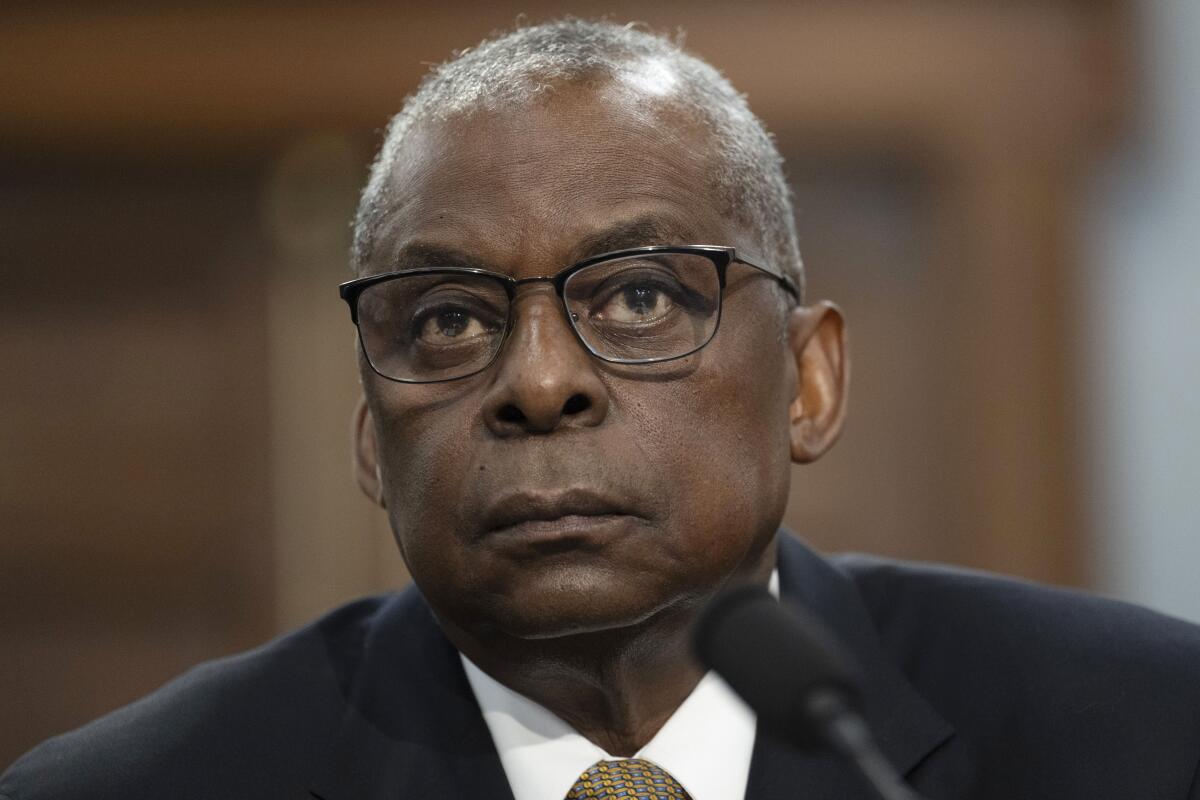
HONOLULU — Defense chiefs from the U.S., Australia, Japan and the Philippines vowed to deepen their cooperation as they gathered in Hawaii for their second-ever joint meeting amid concerns about China‘s operations in the South China Sea.
The meeting came after the four countries last month held their first joint naval exercises in the South China Sea, a major shipping route where Beijing has long-simmering territorial disputes with a number of Southeast Asian nations and has caused alarm with its recent assertiveness in the waters.
U.S. Defense Secretary Lloyd Austin told reporters at a news conference after their discussion that the drills strengthened the ability of the nations to work together, build bonds among their forces and underscore their shared commitment to international law in the waterway.
Australian Defense Minister Richard Marles said the defense chiefs talked about increasing the tempo of their defense exercises.
“Today, the meetings that we have held represent a very significant message to the region and to the world about four democracies which are committed to the global rules-based order,” Marles said at the joint news conference with his counterparts.
A growing number of Americans consider China an enemy whose influence should be contained, a Pew Research study finds
Austin hosted the defense chiefs at the U.S. military’s regional headquarters, U.S. Indo-Pacific Command, at Camp H.M. Smith in the hills above Pearl Harbor. Earlier in the day, Austin had separate bilateral meetings with Australia and Japan followed by a trilateral meeting with Australia and Japan.
Defense chiefs from the four nations held their first meeting in Singapore last year.
The U.S. has decades-old defense treaties with all three nations.
The U.S. lays no claims to the South China Sea, but has deployed Navy ships and fighter jets in what it calls freedom of navigation operations that have challenged China’s claims to virtually the entire waterway. The U.S. says freedom of navigation and overflight in the waters is in America’s national interest.
With growing mistrust between the the U.S. and China, an election between President Biden and Donald Trump looks like a lose-lose scenario for China.
Aside from China and the Philippines, Vietnam, Malaysia, Taiwan and Brunei also have overlapping claims in the resource-rich sea. Beijing has refused to recognize a 2016 international arbitration ruling that invalidated its expansive claims on historical grounds.
Skirmishes between Beijing and Manila in particular have flared since last year. Earlier this week, Chinese coast guard ships fired water cannons at two Philippine patrol vessels off off Scarborough Shoal, damaging both.
Taiwan is celebrating the latest winner of ‘RuPaul’s Drag Race,’ Nymphia Wind, after she called the island a country.
The repeated high-seas confrontations have sparked fears of a larger conflict that could put China and the United States on a collision course. The U.S. has warned repeatedly that it’s obligated to defend the Philippines — its oldest treaty ally in Asia — if Filipino forces, ships or aircraft come under an armed attack, including in the South China Sea.
President Biden’s administration has said it aims to build what it calls a “latticework” of alliances in the Indo-Pacific even as the U.S. grapples with the Israel-Hamas war and Russia’s ongoing invasion of Ukraine.
Beijing says the strengthening of U.S. alliances in Asia is aimed at containing China and threatens regional stability.
McAvoy writes for the Associated Press.
A flood of cheap Chinese electric car exports has raised the specter of another trade war with the U.S. And it has Tesla worried.
More to Read
Sign up for Essential California
The most important California stories and recommendations in your inbox every morning.
You may occasionally receive promotional content from the Los Angeles Times.
